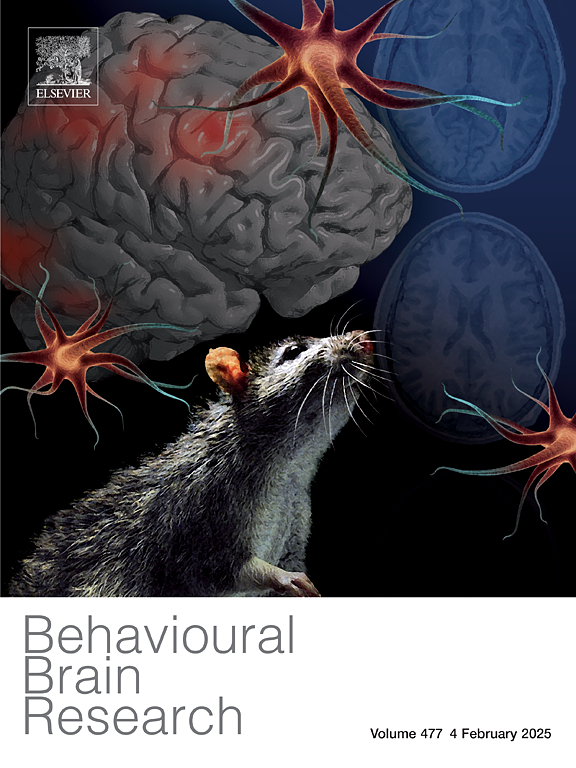Neonatal vocalization rate predicts future prosocial behavior in C57 BL/6J mice
IF 2.6
3区 心理学
Q2 BEHAVIORAL SCIENCES
引用次数: 0
Abstract
Neonatal Ultrasonic vocalizations (USVs) are an innate form of mouse communicative behavior that are produced throughout the first two postnatal weeks. While neonatal USVs are commonly assessed, their relationship to future behaviors is largely unknown. In the present study, we addressed this by analyzing vocalizations in C57BL/6 pups throughout development. We then examined each animal’s anxiety, locomotion, depressive, prosocial, and aggressive behaviors in adolescence. To analyze the results, we used correlations and also divided the mice into a high and a low group according to quantitative measures of their vocalizations, using a median split design. For call rate, we found a large positive correlation between call rate and sociability, furthermore, high vocalizers were significantly more prosocial than low vocalizers. No other significant differences and significant correlations were found. When we controlled for the relative contribution of the weight, sex, litter size, and sex composition of the litter, as well as the duration, pitch and amplitude of the calls, we found that high vocalizers were still significantly more prosocial than low vocalizers, indicating that this relationship cannot be attributed to these other factors. When the data was split according to the pitch, duration, and amplitude of the vocalizations, no significant adolescent behavioral differences nor correlations were found. Similarly, the types of calls produced had minimal relevance to adolescent behaviors. Altogether, our study elucidated a long-term implication for USVs, finding that the number of USVs produced throughout early development is a significant predictor of an animal’s future prosocial behavior.
求助全文
约1分钟内获得全文
求助全文
来源期刊

Behavioural Brain Research
医学-行为科学
CiteScore
5.60
自引率
0.00%
发文量
383
审稿时长
61 days
期刊介绍:
Behavioural Brain Research is an international, interdisciplinary journal dedicated to the publication of articles in the field of behavioural neuroscience, broadly defined. Contributions from the entire range of disciplines that comprise the neurosciences, behavioural sciences or cognitive sciences are appropriate, as long as the goal is to delineate the neural mechanisms underlying behaviour. Thus, studies may range from neurophysiological, neuroanatomical, neurochemical or neuropharmacological analysis of brain-behaviour relations, including the use of molecular genetic or behavioural genetic approaches, to studies that involve the use of brain imaging techniques, to neuroethological studies. Reports of original research, of major methodological advances, or of novel conceptual approaches are all encouraged. The journal will also consider critical reviews on selected topics.
 求助内容:
求助内容: 应助结果提醒方式:
应助结果提醒方式:


